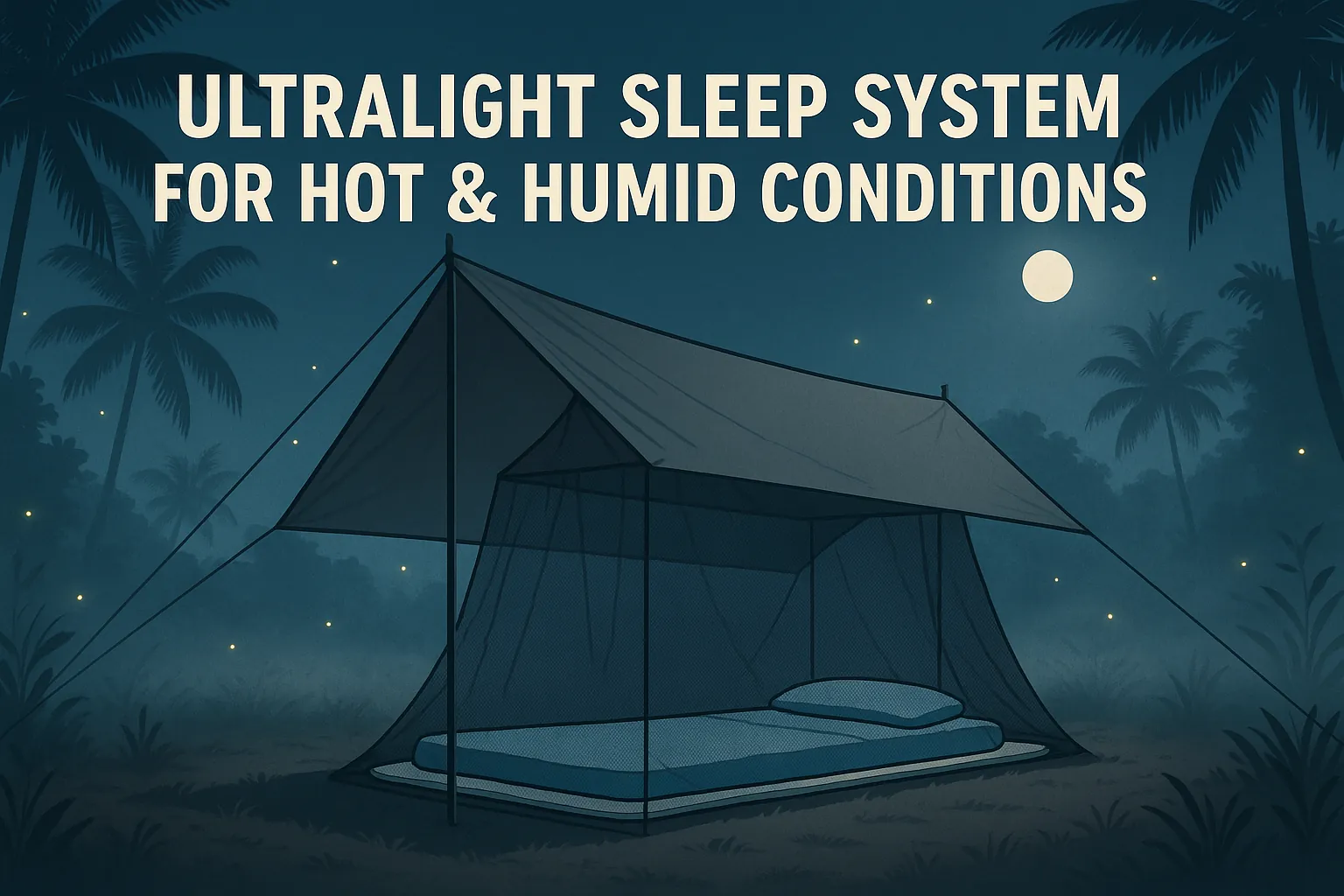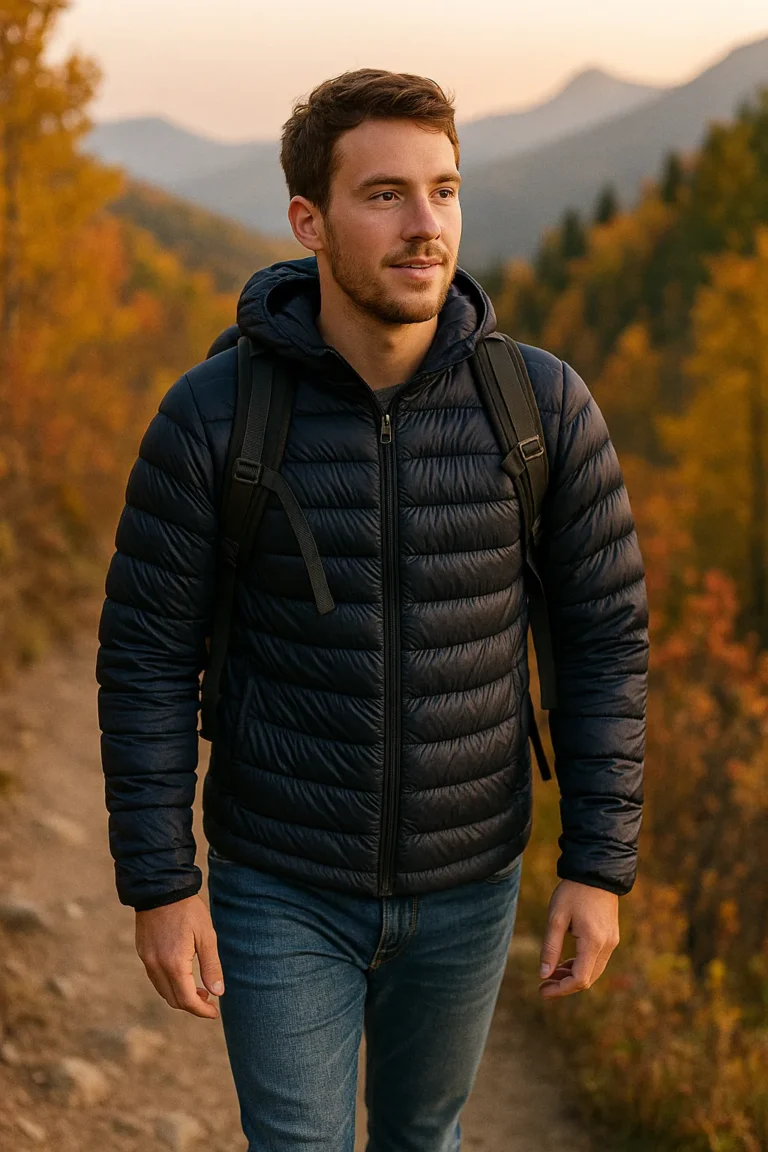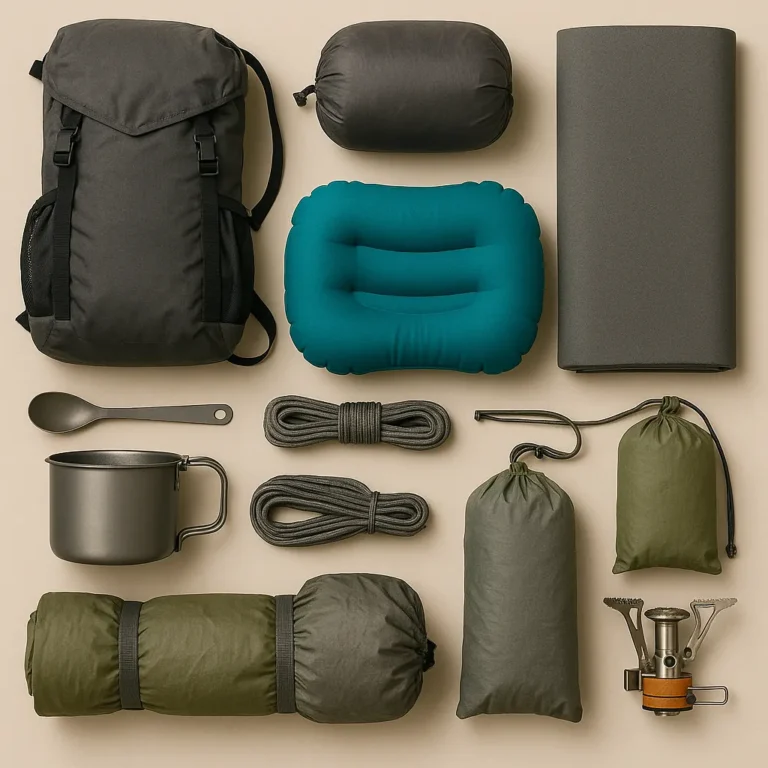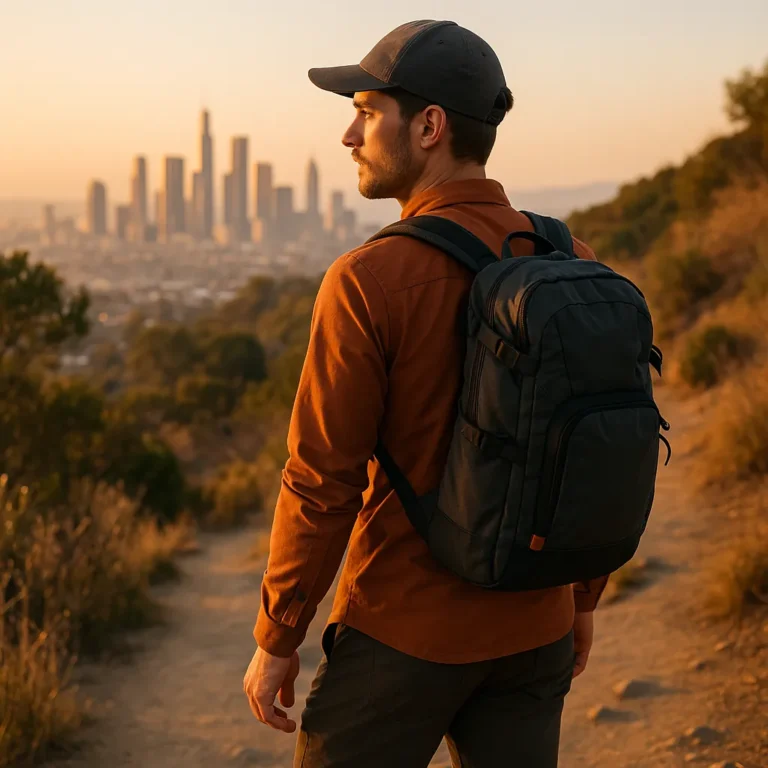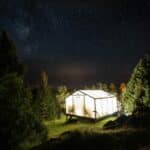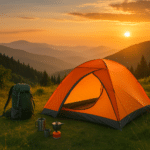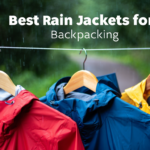Beat sweaty, still nights with a sleep kit that breathes, dries fast, and stays under two pounds—without blowing your budget.
Who it’s for: warm-weather backpackers in muggy climates (Southeast, Gulf Coast, tropics), summer thru-hikers, tarp campers.
Who it’s not for: shoulder-season trips below ~60°F/16°C; exposed ridgelines with strong wind; anyone needing plush insulation.
Quick Picks (3 proven builds under budget)
| Build | Components | Total weight | Typical cost | Why it works |
|---|---|---|---|---|
| All-synthetic, sweat-friendly | Sea to Summit Breeze Liner (Compact Mummy) + Sea to Summit Nano Mosquito Pyramid Net (Single) + Klymit Static V2 air pad | ≈ 29.0 oz (1 lb 13 oz) | ≈ $200 | Wicking liner + cushy pad for comfort; full-body bug barrier; quick-dry materials. |
| Max airflow (foam) | Sea to Summit Breeze Liner + Sea to Summit Nano Net + NEMO Switchback (Regular) | ≈ 26.9 oz (1 lb 11 oz) | ≈ $175–$185 | Closed-cell foam can feel less clammy in heat and never punctures; liner handles sweat; net stops no-see-ums. |
| Featherweight quilt option | AEGISMAX AIR-E (Regular) + Gossamer Gear Thinlight 1/8″ + Sea to Summit Nano Net | ≈ 21.1 oz (1 lb 5 oz) | ≈ $211–$222 | Light down quilt for steamy nights; thin foam adds grip/comfort; full bug protection with minimal airflow penalty. |
Weights and prices are based on current product specs as of August 2025. Prices vary by retailer, size, and sales.
Why hot & humid needs a different approach
- Ventilation beats insulation. Prioritize breathable, moisture-managing fabrics (e.g., COOLMAX®/TENCEL blends) that wick sweat so you don’t feel sticky.
- Low pad R-value is fine. In warm conditions, R-values around 1–2 are adequate and often more comfortable. (R-value compares pad warmth under the ASTM F3340 standard.)
- Bug control is non-negotiable. A full-body pyramid net gives real protection at ~2.9 oz with excellent airflow.
The builds, in detail
1) All-synthetic, sweat-friendly (easiest recommendation)
What’s inside
- Sea to Summit Breeze Liner (Compact Mummy) — 9.5 oz; COOLMAX® fibers for wicking; typical $69.95.
- Sea to Summit Nano Mosquito Pyramid Net (Single) — 2.9 oz; typical $54.95.
- Klymit Static V2 air pad — around 16.6 oz; typical $74.99.
Total: ≈ 29.0 oz (1 lb 13 oz), ≈ $199.89.
Why it works: The liner manages sweat, the pad provides cushion without over-insulating for August nights, and the pyramid net blocks bugs while staying ultrabreathable. On still nights, sleep directly on the pad with the liner as a sheet.
Good for: muggy tent or tarp camps; sweaty sleepers who still want plush comfort.
Watch-outs: wipe the pad before bed to reduce slickness; open every vent you’ve got.
2) Max airflow (foam) — cool running, bombproof
What’s inside
- NEMO Switchback (Regular) — 14.5 oz, R-Value 2; typical $54.95–$59.95.
- Sea to Summit Breeze Liner — 9.5 oz.
- Sea to Summit Nano Mosquito Pyramid Net (Single) — 2.9 oz.
Total: ≈ 26.9 oz (1 lb 11 oz), ≈ $175–$185.
Why it works: Closed-cell foam never punctures and can feel less clammy in tropical humidity; the wicking liner keeps skin drier; the pyramid net guarantees bite-free sleep.
Good for: minimalists, tarp users, buggy camps with scarce breeze.
Watch-outs: bulky carry; comfort depends on ground softness.
3) Featherweight quilt option — lightest total weight
What’s inside
- AEGISMAX AIR-E (Regular) — listed sleeping bag weight ~440 g / ~15.5 oz; EN Limit 43°F / Comfort 52°F; typical $134–$145.
- Gossamer Gear Thinlight 1/8″ — ~2.7 oz; typical $22.
- Sea to Summit Nano Mosquito Pyramid Net (Single) — 2.9 oz.
Total: ≈ 21.1 oz (1 lb 5 oz), ≈ $211–$222.
Why it works: A light down quilt is plenty for steamy nights; the Thinlight adds grip and a whisper of cushion; the pyramid net handles bugs with minimal airflow penalty. If you expect hard platforms, add a Switchback Short (+~10.5 oz), accepting you’ll nudge above 2 lb.
Good for: gram-counters, hammock sleepers (use quilt + net; pad optional).
Watch-outs: coverage drops if wind picks up or temps dip toward 60°F—pack a base layer insurance.
Buying & setup tips for swampy nights
- Pitch for breeze: face openings to prevailing wind; run a tarp high if rain isn’t imminent.
- Fabrics matter: liners using COOLMAX®/TENCEL blends wick and dry faster than plain nylon.
- Pad warmth: in true summer, R~1–2 is appropriate; higher R-values can feel warmer than you want.
- Bug protocol: full-body pyramid nets (~2.9 oz) beat head nets for real sleep.
- Moisture hygiene: quick rinse or body-wipe before bed; air the liner at sunrise.
How we chose (methods & assumptions)
- Each build is constrained to ≤ 32 oz and ≤ $250 using current manufacturer specs and widely available US pricing.
- For pad warmth, we rely on standardized ASTM F3340 R-values to compare apples-to-apples.
- Availability and pricing vary; always confirm current weight/price/size options before buying.
FAQ
What temperatures are these for?
Think sticky summer nights—lows roughly 65–80°F (18–27°C) with high humidity. If you expect cooler lows or wind exposure, add a light base layer and consider a slightly warmer pad or quilt.
Will I miss a real sleeping bag?
In muggy weather, most people sleep cooler with a liner or light quilt + bug net. Bags that can’t vent well often feel swampy.
Air pad or foam in humidity?
Foam generally runs cooler and never pops; air pads pack smaller and feel plusher. In true sauna conditions, foam + liner is hard to beat.
Do I need a pillow?
A scant-ounce inflatable or a stuff-sack with your puffy works. Prioritize neck angle more than loft—too high traps heat.

